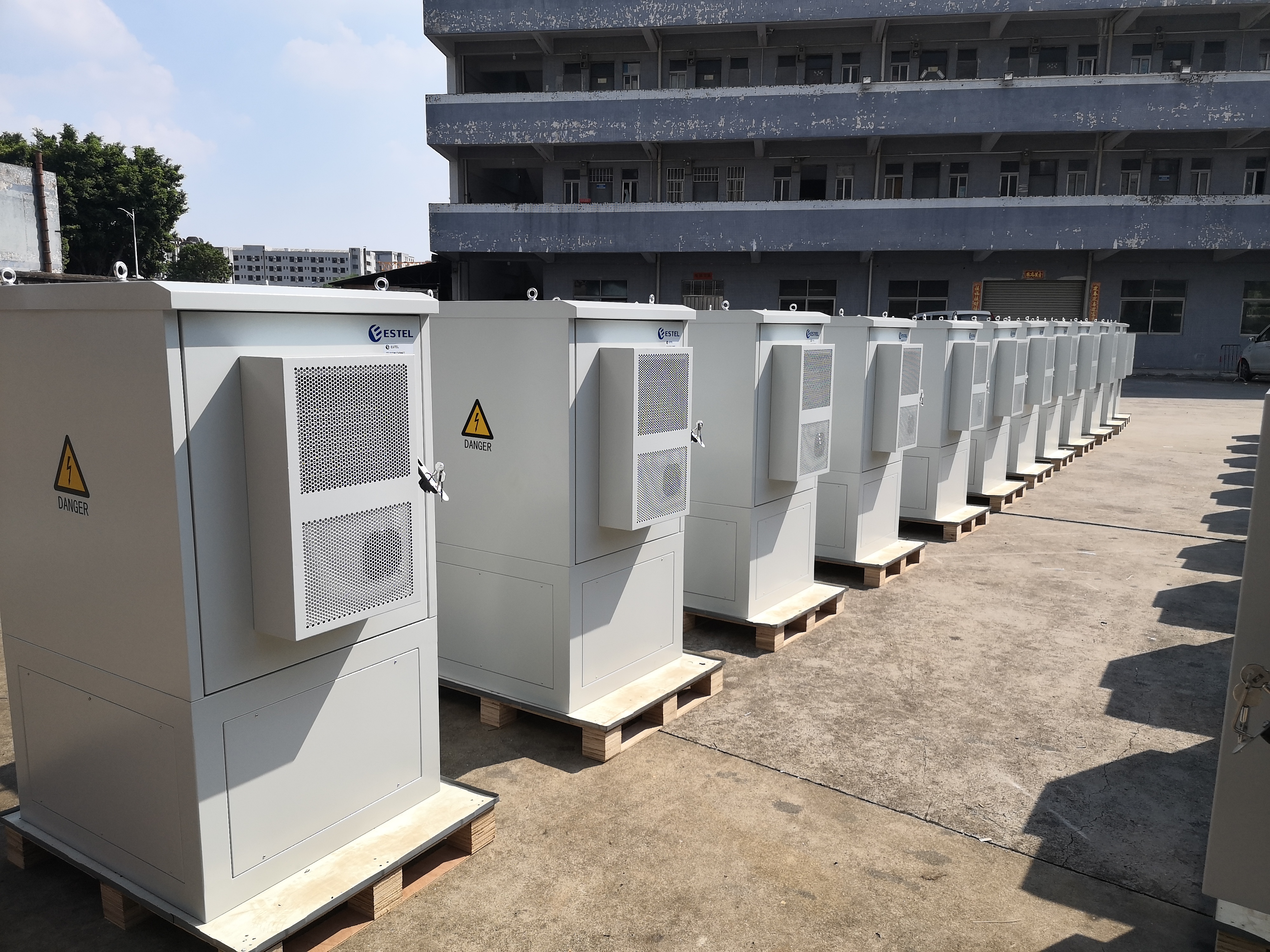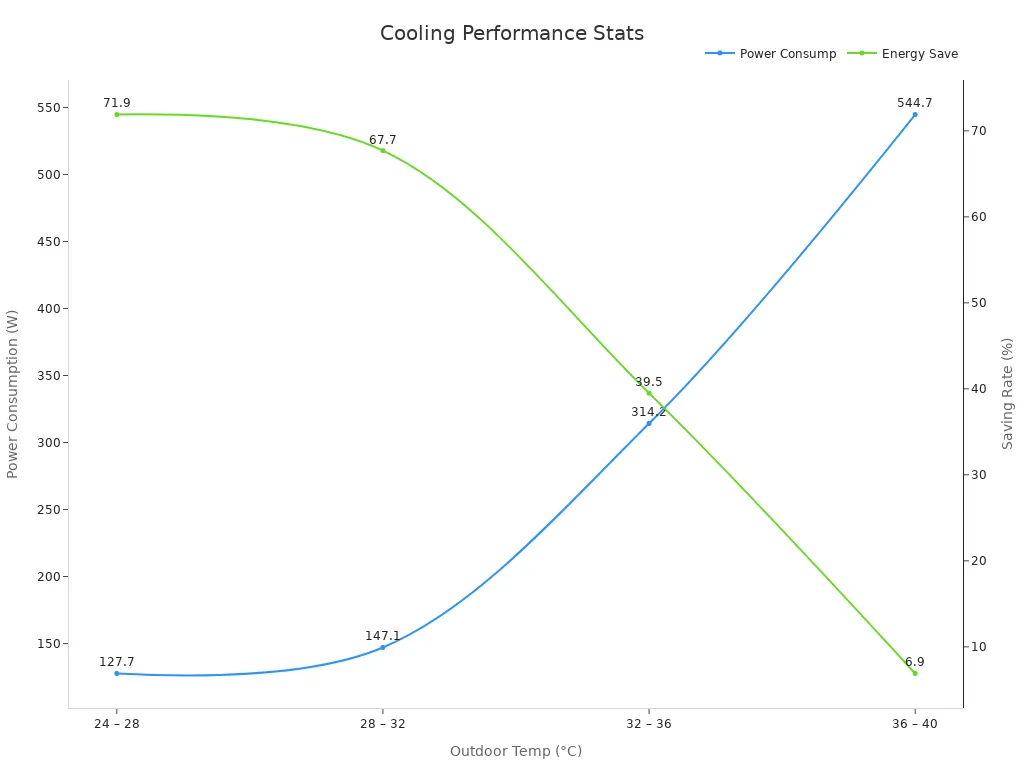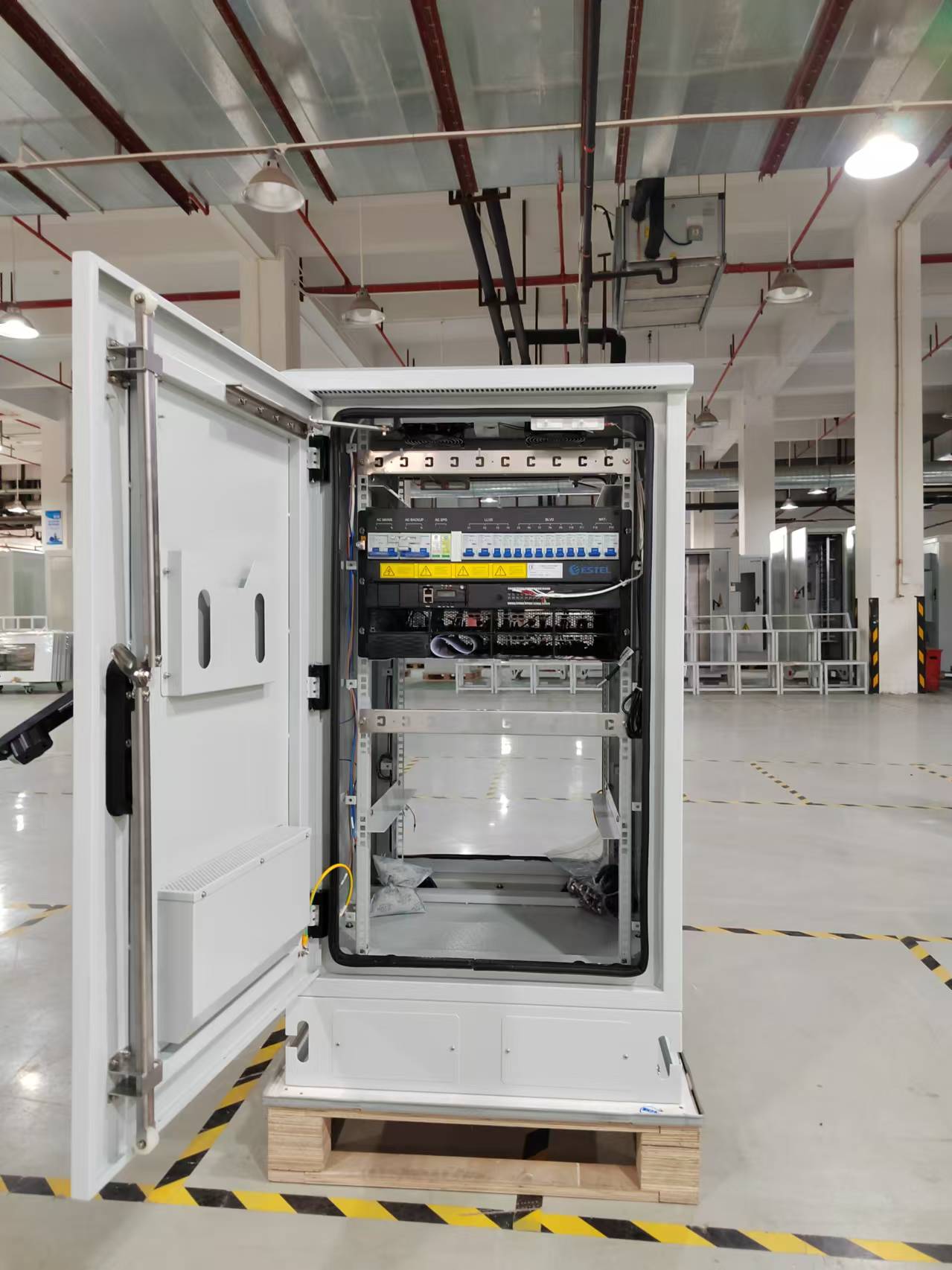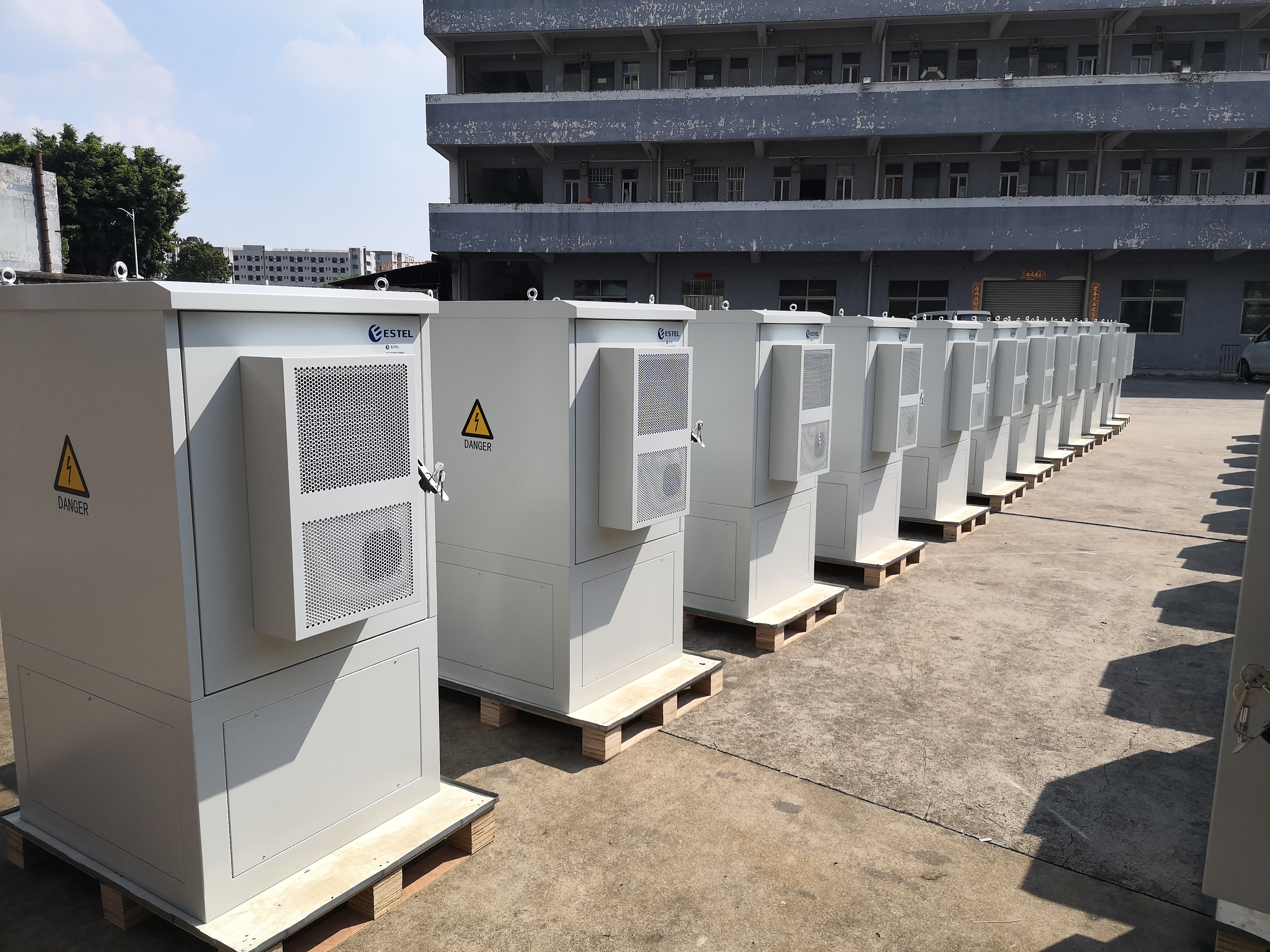How to Select the Right Outdoor Cabinet Heat Exchanger

Choosing the right Outdoor Cabinet Heat Exchanger starts with one key step: match the cooling capacity to your cabinet’s heat load. If you skip this, your equipment can overheat or waste energy. For example, when you calculate the heat load, you use the formula Qr = (U × A × ΔT) + (SHG × A). A cabinet with a 5 m² surface, U = 0.8 W/m²·K, ΔT = 15 K, and SHG = 200 W/m² may need to handle 1,060 W from external heat alone. Always add a safety factor of 1.2 to your total heat load. This extra margin keeps your system reliable and helps prevent costly failures.
Key Takeaways
Always figure out your cabinet’s total heat load. This includes equipment power and solar heat. Add a 20% safety margin to stop overheating.
Pick a heat exchanger with enough cooling power. Make sure it matches or is more than your heat load. Think about your local weather and temperature changes.
Choose units with the right NEMA or IP ratings. These protect against dust, water, and bad weather. This helps your equipment last longer.
Do regular maintenance like cleaning filters every 3 to 6 months. Check seals to keep your heat exchanger working well. This helps stop expensive problems.
Use a checklist before you install anything. Make sure it fits, has the right power, and is sealed well. Watch temperatures to find problems early.
Cooling Needs
Heat Load
First, you need to find out how much heat is inside your cabinet. This heat comes from the equipment and the sun. For example, the equipment can use about 100 W of power. The sun can add up to 200 W, depending on the cabinet’s color and size. If your cabinet is in the sun, the middle PCB surface can get as hot as 65–70 ºC. A heat exchanger can take away about 60 W, which is 40% of the heat from inside. The table below shows how different things change the heat load:
Measurement/Parameter | Value/Range | Notes/Context |
|---|---|---|
Internal power dissipation | 100 W | Power used by equipment |
Solar heat load (irradiance) | Up to 600 W/m² | Sunlight on cabinet surface |
Resulting solar heat load on enclosure | 0 to 200 W | Varies with color and finish |
Temperature rise (∆T) of middle PCB surface | 65–70 ºC | Under solar loading |
Heat dissipated by heat exchanger | ~60 W (40% of internal load) | Cooling effect |
Temperature reduction by air-to-air heat exchanger | ~75% reduction | Most effective cooling method |
Tip: You can use fans or white paint to keep things cooler. Fans can lower the temperature by up to 55%. White paint can cut the heat by 25%.
Environment
Think about where you will put your cabinet outside. The temperature and humidity outside can change how well cooling works. If it is hot or wet, it is harder to keep things cool. Heat exchangers help keep the inside close to the outside air temperature. This works even if there is a lot of heat inside. Closed-loop designs stop dust and water from getting in. This keeps your electronics safe. Some cooling systems, like heat pipes, work well when it is very hot or cold.
Outdoor cabinets have to deal with dust, water, and big temperature changes.
Heat exchangers help keep equipment safe in tough weather.
Using double walls or shields can help cool the cabinet more.
Cabinet Size
How big your cabinet is changes how much cooling you need. Bigger cabinets, like the Westell Boxer 10, can hold more equipment and may need more cooling. Smaller cabinets get hot faster but are easier to cool down. Always check the rack space and make sure the heat exchanger fits. Cabinets made for outdoor use, like NEMA 4, protect better and work well with heat exchangers.
Selection Criteria
Cooling Capacity
You need to make sure the cooling capacity matches the heat load. Cooling capacity tells you how much heat the unit can remove. This depends on the temperature difference inside and outside the cabinet. When it gets hotter outside, the heat exchanger works harder. Air-to-air models work best when the inside is warmer than outside. They are good if you do not need a lot of cooling. If your cabinet is big or needs more cooling, you might use a liquid-to-air model. These are not used as much outside.
Cooling performance changes when the outdoor temperature goes up. The table below shows how power use and energy savings change with temperature:
Outdoor Temperature Range (°C) | Average Power Consumption (W) | Energy Saving Rate (%) |
|---|---|---|
24 – 28 | 127.7 | 71.9 |
28 – 32 | 147.1 | 67.7 |
32 – 36 | 314.2 | 39.5 |
36 – 40 | 544.7 | 6.9 |
As it gets hotter, the unit uses more power and saves less energy. You should always check how hot it gets where you live.

Tip: Pick a heat exchanger with a little extra capacity for hot days.
Energy Efficiency
Energy efficiency helps you save money and keeps your equipment safe. Efficient heat exchangers use less power to cool your cabinet. When you choose a unit, look for high energy-saving rates at the temperatures you expect. Some units use heat pipes and vapor compression to work better. You can also check the table above to compare power use.
Note: Energy-efficient units lower your bills and help stop overheating.
Durability
Outdoor cabinets face rain, dust, sun, and chemicals. You need a heat exchanger that can handle these tough things. Look for NEMA or IP ratings. NEMA 4 and 4X mean the cabinet is waterproof and dust-tight. NEMA 4X also stops rust. These ratings help you pick a unit that lasts longer outside.
Durable heat exchangers protect your equipment and lower failures. Closed-loop cooling systems can cut failures by up to 30%. Thermoelectric coolers can make battery backup last 25% longer. If the inside gets 10°C hotter, electronic parts can last half as long. A strong heat exchanger keeps your equipment safe and working longer.
Component / Technology | Reliability Statistic / Impact |
|---|---|
Closed-loop cooling systems | Up to 30% reduction in failure rates |
Thermoelectric coolers | 25% increase in battery backup life |
Electronic components | Lifespan cut in half for every 10°C temperature rise |
Maintenance
Low maintenance means less work and lower costs for you. Simple Outdoor Cabinet Heat Exchangers need fewer repairs. You should follow the maker’s schedule for checks and cleaning. Regular checks and changing worn parts, like belts or seals, help stop breakdowns.
How often you do maintenance depends on use, weather, and the maker’s advice.
Skipping maintenance can make replacement cost up to four times higher.
Downtime can be very expensive, especially in car factories.
Using checklists and software helps you remember tasks and not miss steps.
Pro Tip: Preventive maintenance saves money and keeps your equipment working longer.
Noise
Noise matters if your cabinet is near people or offices. Some heat exchangers are quiet, but others are loud. Check the noise level in the product specs. If you need a quiet unit, look for low-decibel models. Fans and compressors can make noise, so choose carefully for your location.
Remember: A quieter unit makes things better for workers and neighbors.
Other Important Criteria
When you pick an Outdoor Cabinet Heat Exchanger, check for these features:
NEMA or IP ratings for dust and water protection.
Power supply options, like 48 V DC or 220 V AC.
Compliance with standards like ROHS and NEMA.
Good sealing accessories to keep out dust and water.
Climate control options that fit your needs, like air-to-air or thermoelectric coolers.
Outdoor cabinets must meet strict safety and reliability standards. These standards help you avoid problems and keep your equipment safe in bad weather.
Outdoor Cabinet Heat Exchanger Types

Air-to-Air
You can use air-to-air heat exchangers for many outdoor cabinets. These units move heat from inside the cabinet to the outside air. They use fans and heat pipes to transfer heat without mixing the inside and outside air. This keeps dust and water out of your equipment. Air-to-air models work best when the outside air is cooler than the inside. You get good energy savings and low maintenance because there are fewer moving parts. Some advanced models use impingement cooling, which can double the heat load capacity. You should place the air inlet at a 45° angle for the best cooling. This type works well for mild climates and moderate heat loads.
Tip: Air-to-air heat exchangers help you keep your cabinet clean and safe from outside pollution.
Air-to-Water
Air-to-water heat exchangers use water to remove heat from your cabinet. Water absorbs heat better than air, so these units can handle higher heat loads. You often see them in places like data centers or factories where equipment gets very hot. These systems need a water supply and regular checks to prevent leaks. They cost more at first, but they keep working well even when the heat load is high. If you need heavy-duty cooling, air-to-water is a strong choice.
You must check for leaks and keep the water system clean.
These units work well in tough environments with lots of heat.
Pros and Cons
You should compare the main types before you choose an Outdoor Cabinet Heat Exchanger. The table below shows the key points:
Type | Pros | Cons |
|---|---|---|
Air-to-Air | Low cost, easy upkeep, energy efficient, keeps cabinet clean | Not for very high heat loads, less effective in extreme heat |
Air-to-Water | Handles high heat, works in tough settings | Higher cost, needs water, more upkeep |
Thermoelectric | Precise control, good for small spaces | Limited cooling, uses more energy for big jobs |
User studies show that air-to-air units save energy and last longer in mild climates. Air-to-water units give you more cooling power for heavy-duty needs. Thermoelectric coolers work best for small cabinets where you need exact temperature control. You should think about your climate, heat load, and budget before you decide.
Sizing and Installation

Sizing
It is important to pick the right size Outdoor Cabinet Heat Exchanger. This keeps your equipment safe and working well. First, figure out how much heat comes from your devices and the sun. If the heat load goes up, you need a bigger heat exchanger. Try to keep the inside and outside temperature difference under 50°F (28°C). If you want a smaller difference, you might need a much bigger and pricier unit. But this does not always make things better. Make sure you leave enough room for the heat exchanger when you plan your cabinet. If you wait too long, you could have heat problems. Clean the heat exchanger every 3 to 6 months. This stops dust from blocking airflow and keeps it working well. Use temperature sensors or alarms to find overheating early.
Tip: Watch the inlet and outlet temperatures. This helps you find problems before they hurt your equipment.
Placement
Where you put your cabinet changes how well the heat exchanger works. The weather and place decide how much free cooling you get. In cool places, you can use outside air more and save energy. In hot or wet places, your system works harder and may need more backup power. Putting your cabinet in the shade lowers the heat from the sun. In busy places, you might use extra heat for other buildings. Always check if the local power grid is reliable. This can change how well your cooling system works.
Installation Tips
Follow these steps to install your heat exchanger the right way:
Make sure the cabinet and heat exchanger fit and have space for air.
Put in temperature sensors to watch for quick changes.
Do not let the temperature change too fast—keep it under 1.8°F (1°C) each minute.
Clean the heat exchanger often so it works well.
Turn off the system right away if airflow stops to stop overheating.
A good Outdoor Cabinet Heat Exchanger setup keeps your equipment safe and cuts down on repair costs.
Mistakes to Avoid
Undersizing
Some people think a smaller heat exchanger saves money. But a small unit cannot remove enough heat. This can make your equipment get too hot and stop working. You should always figure out the total heat load first. Add a safety margin to your answer. If you pick a unit that is too small, it can break your equipment. Repairs can cost a lot of money.
Tip: Use the manufacturer’s sizing guide. Check your math before you buy.
Ignoring Environment
You must think about the weather outside. Hot, wet, or dusty places make cooling harder. If you forget this, your Outdoor Cabinet Heat Exchanger may not work well. Look at the temperature and weather in your area. Pick a model with the right NEMA or IP rating for your weather. This keeps your equipment safe from rain, dust, and heat.
Put your cabinet in the shade if you can.
Add extra shields in tough places.
Pick a unit made for your local weather.
Skipping Maintenance
You have to keep your heat exchanger clean and working. If you skip maintenance, filters can get clogged and airflow gets weak. This can make your system overheat and break down. Make a schedule to clean and check your unit. Change broken parts as soon as you see a problem.
Maintenance Task | How Often | Why It Matters |
|---|---|---|
Clean filters | Every 3 months | Keeps airflow strong |
Inspect seals | Twice a year | Stops dust and water leaks |
Check fans | Every 6 months | Prevents sudden breakdowns |
Remember: Doing regular maintenance keeps your equipment safe and helps it last longer.
Final Checklist
Before you finish, use this checklist to help you. It makes sure you pick and install your Outdoor Cabinet Heat Exchanger the right way. Go step by step so you do not miss anything. Experts say checklists help you find small problems early. You can spot loose wires, too much heat, or leaks before they get worse. This saves you money and keeps your equipment working.
Confirm Heat Load Calculation
Check your math for the total heat load again. Add a safety margin to keep your equipment safe.Check Cooling Capacity
Make sure the heat exchanger can handle your heat load or more.Review Environmental Ratings
Look for NEMA or IP ratings that match your local weather. This keeps dust and water out of your cabinet.Inspect Power Supply Compatibility
Make sure the power supply fits your site, like 48 V DC or 220 V AC.Test Installation Fit
Check that the heat exchanger fits in your cabinet. Make sure there is enough space and airflow.Perform Functional Tests
Turn on the system and watch it work. Look for signs of overheating or leaks.Check Seals and Connections
Look at all seals and cable entries. Tighten any loose parts so dust and water cannot get in.Set Up Maintenance Schedule
Plan to check and clean your unit often. Keep a log to track repairs and checks.
Tip: Do a final check before you start using your equipment. This helps you find problems early and keeps your cabinet working well.
A checklist like this helps you install everything the right way. You can use it to make sure every part of your Outdoor Cabinet Heat Exchanger works. Careful checks and logs help your system last for years.
You can pick the right Outdoor Cabinet Heat Exchanger by following some easy steps. First, figure out how much heat your cabinet makes. Then, choose a unit that can cool that amount. Make sure the design fits your local weather and what your equipment needs. The table below shows how things like wind, pipe shape, and climate can change how well the unit works. This shows why you need a solution made for your area.
Study Focus | Key Result | Implication |
|---|---|---|
Wind speed effect | Local weather matters | |
Hybrid system | Energy use drops by over 50% in summer | Custom designs save energy |
Climate impact | Performance changes with air and soil temperature | Pick climate-specific units |
Use the checklist before you set up your system. If you are not sure, ask an expert for help.
FAQ
What is the best way to calculate my cabinet’s heat load?
You should add up the power used by your equipment and the heat from the sun. Use the formula:Total Heat Load = Internal Power + Solar Heat Gain.
Tip: Always add a safety margin of 20% for extra protection.
How often should I clean my outdoor cabinet heat exchanger?
You should clean the filters and surfaces every 3 to 6 months. Dust and dirt can block airflow and lower cooling power.
Set reminders for regular cleaning.
Check for clogs after storms or windy days.
Can I use any heat exchanger in a very hot or cold climate?
No, you need to pick a model made for your local weather.
Look for NEMA or IP ratings. These ratings show if the unit can handle rain, dust, or extreme temperatures.
What happens if my heat exchanger is too small?
A small unit cannot remove enough heat. Your equipment may overheat and stop working.
Always check the heat load before you buy.
Use the manufacturer’s sizing guide.
Do I need a professional to install my heat exchanger?
You can install some models yourself by following the instructions. For larger or complex systems, you should ask a professional.
Safety first: Always turn off power before starting any installation.
See Also
Choosing The Ideal Outdoor Electrical Cabinet For You
Selecting The Perfect Outdoor Mount For Telecom Cabinets
Deciding On The Optimal Cooling Solution For ESTEL Cabinets
Reliable Outdoor Cabinets Providing Efficient Cooling And Control
Guidelines For Installing ESTEL Cabinets In Extreme Environments
CALL US DIRECTLY
86-13752765943
3A-8, SHUIWAN 1979 SQUARE (PHASE II), NO.111, TAIZI ROAD,SHUIWAN COMMUNITY, ZHAOSHANG STREET, NANSHAN DISTRICT, SHENZHEN, GUANGDONG, CHINA

